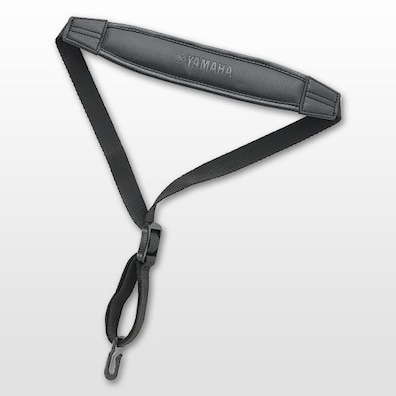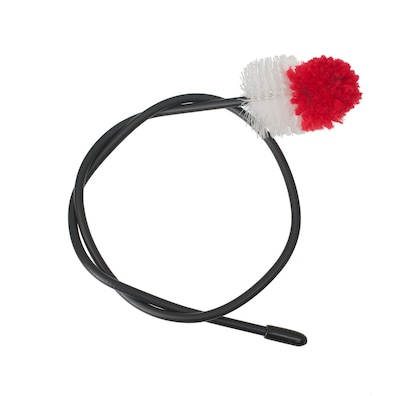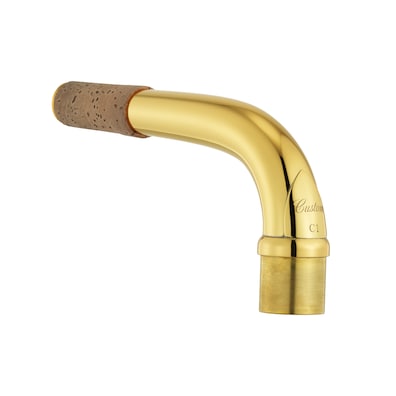Yamaha Saxophone Neck Comparison
Yamaha Neck Comparison – Custom C1, E1 and V1
My name is Erin Royer, I am a Perth based Yamaha artist and repair technician. I’m the Head of Saxophone at The University of Western Australia and currently in the final year of candidature for the Doctor of Musical Arts degree. My specialist area is looking at the harmonic response of the saxophone and how the saxophone resonator affects the sound and playability of the instrument. Yamaha has approached me to use the controlled methodology of my doctorate to measure the acoustic response of their three professional necks, the custom C1, E1 and V1. Further to this, I will provide insight on how these necks can enhance your performance and offer assistance when purchasing or upgrading your Yamaha saxophones.
Specifications of Each Neck
The C1 has the smallest taper of all three necks with the mouthpiece receiver side having a diameter of 12.13mm. This smaller taper is intended to give the player more control of the sound and support in the focussing of sound and air.
The E1 sits in-between the C1 and V1 having a more gradual taper, measuring at 12.41mm at the mouthpiece receiver end. The E1 is designed as the more versatile neck, allowing the player control but also liveliness to the sound.
The V1 neck is the most open out of the three necks having a bore size diameter of 12.56mm at the mouthpiece receiver end. What pairs with the largest bore size is an open and free-blowing feeling, with extreme flexibility.
The octave pip is in the same location across all three necks and the tenon receiver is the same diameter to ensure the necks are all interchangeable with the full range of intermediate to professional Yamaha saxophones (YAS-480 through to the custom model saxophones). This is a brilliant feature and one I encourage players to take advantage of, as we are about to discover how these brilliant necks can vary your sound and support you when seeking a certain performance quality. It is important to note that the change in bore size between the three necks is small in measurement, however this translates exponentially for the player when we are talking about how it feels to focus your air and sound. These changes are also represented in the data from the oscilloscope. The results show subtle changes in decibels between the three necks; however, this also translates in a more obvious fashion when the necks are played by the performer.
Use of the Oscilloscope
Part of my doctorate thesis is using an oscilloscope paired with a sound emitting device that I designed to measure the frequency response of the saxophone. Using the bode plot function on the oscilloscope we can graph the resonant peaks of the instrument. This is represented in the graph below. The X axis is frequency, measured in hertz (Hz) and the Y axis is gain, measured in decibels (dB). The higher the peak, the brighter and more resonant the sound. The lower the peak the darker and generally more focussed the tone. The C1 neck is represented in blue, the E1 in red and the V1 in green. The measurements have been limited to the frequency range of the alto saxophone from Low Bb to Altissimo D.
From the oscilloscope results, the first point of interest is that the three necks are tiered based on their taper size. The C1 has the lowest frequency response for the lower register, which pairs well with the dark and focussed tone that you can achieve with the C1 neck.
Furthermore, the E1 tends to be the middle response across the frequency spectrum, which pairs well with the even nature of the E1 neck and shows its versatility; there is control but also brightness and an open response.
With the largest bore size, I expected to see the V1 sitting on top of the frequency response graph, and it did not let me down. The V1 can be seen as the brightest performing neck of the three and the most resonant, which is exactly how I feel as a player when I am using the V1 neck. It does however transition to the lowest response when in the altissimo region of the frequency spectrum (above 940hz).
Of interest, the C1 becomes the most resonant in the higher harmonic region of the graph. This corresponds to how this feels as a player too. The C1 is incredibly responsive in the upper register and altissimo range. It is also the easiest and most comfortable to control in this range due to the focussed nature of the taper. In contrast, to achieve similar results with the V1 neck, more control is required from the individual in terms of air focussing and voicing to let this register shine.
After reviewing the necks through the oscilloscope, I play tested all three with various mouthpieces and reed combinations.

Figure 3: Oscilloscope results: C1 (blue), E1 (red) and V1 (green) necks - Low Bb on a YAS-480 saxophone
Performance Review
As a cross-genre saxophonist who is regularly performing in jazz, classical and rock settings I am so thankful to the equipment that can help me achieve my individual sound for each contrasting music style. The ability to change your saxophone neck and immediately feel the response change is very cool, and one musicians should take advantage of. For each of the three genres I regularly play I have a different set up that I use (mouthpiece/reed combination). I have tested each neck with my various set ups. Below are my performance recommendations on the three custom necks.
Custom C1:
The C1 neck gave me the most amount of control and warmth to my tone. The bottom register was effortless and the altissimo range was close to perfection. I felt a great sense of ease on this neck, but certainly was drawn to the C1 with my classical set up. I had a very centred tone and was able to use the resistance provided by the smaller taper to my advantage in creating an even sound across the registers. When I used my jazz and rock set-up, I still enjoyed using this neck for the reasons above, however I felt limited in my ability to add brightness and grit to my sound, and found I was drawn to the more open necks for the jazz and rock set ups. The C1 is a neck I would highly recommend to performers looking for greater clarity and control on sound and tone, and for an effortless playing feel.
Custom E1:
The E1 neck was a delight to play. It felt the most versatile out of the three necks as I had the freedom to be either bright or dark with my tone, and certainly found it to be very even across the registers. Dynamics and expression were easy to control. I would choose the E1 neck if I were seeking versatility of playing styles as I was comfortable on all three set ups. Jazz and rock performers would be drawn to its flexible playability and open tone over the C1. It gave me what I needed for each genre, whether that be brightness, dynamic versatility, evenness across registers or ease of expression. The E1 is a solid all-rounder.
Custom V1:
The V1 neck is my usual neck of choice. I am entranced by the power that it provides with the larger bore size; it is the freest blowing out of the three necks, and is incredibly flexible with expression and dynamic range. I have never felt limited on the V1 neck in any genre that I play. The V1 has a wild side in terms of its brightness and fullness that perhaps means the performer must work harder to control and centre the sound. But with the risk comes the reward. The projection possibilities are beyond that of the E1 and C1 necks and the total control of expression makes this neck a favourable choice for many performers. When comparing the V1 and C1, I certainly felt the difference in control, being easier on the C1, however I like that I can perform with extremities, especially with dynamics and expression on the V1 neck for my personal playing style. I would recommend the V1 for anyone seeking a more vibrant sound and a free blowing playing style.
All three necks on offer by Yamaha are of the highest quality. They all excel with their playability and their intonation is fabulous. I hope this article will be of benefit to performers and teachers who are looking for more information on what is on offer through Yamaha, and for anyone looking to upgrade your saxophone neck to focus in on their unique qualities and possibilities that they can bring to your saxophone sound and performance.
About Erin Royer

Erin Royer is a classically trained saxophonist, specialising on the tenor saxophone. Currently Erin is the head of saxophone at the University of Western Australia, and tutors at The Western Australian Academy of Performing Arts. Erin is also the saxophone tutor for Wesley College, lumen Christi College and Mercedes College.
Erin is a regular performer around Perth, Western Australia, performing with The Oz Big Band, The Western Australian Youth Jazz Orchestra, and the exciting saxophone quartet, Just Sax. In addition to Erin’s performance career she also runs a saxophone repair business called Just Sax Repairs, having gained the necessary skills in saxophone repair under the guidance of repair specialist Steve Crow, whilst over in England 2012.

Saxophone Neck Strap

Saxophone Neck Brush
Saxophone Neck Brush for Alto, Tenor and Baritone Saxophones









